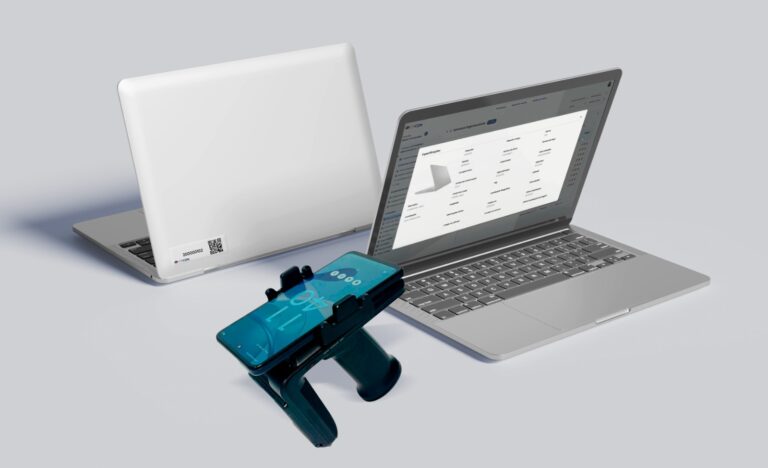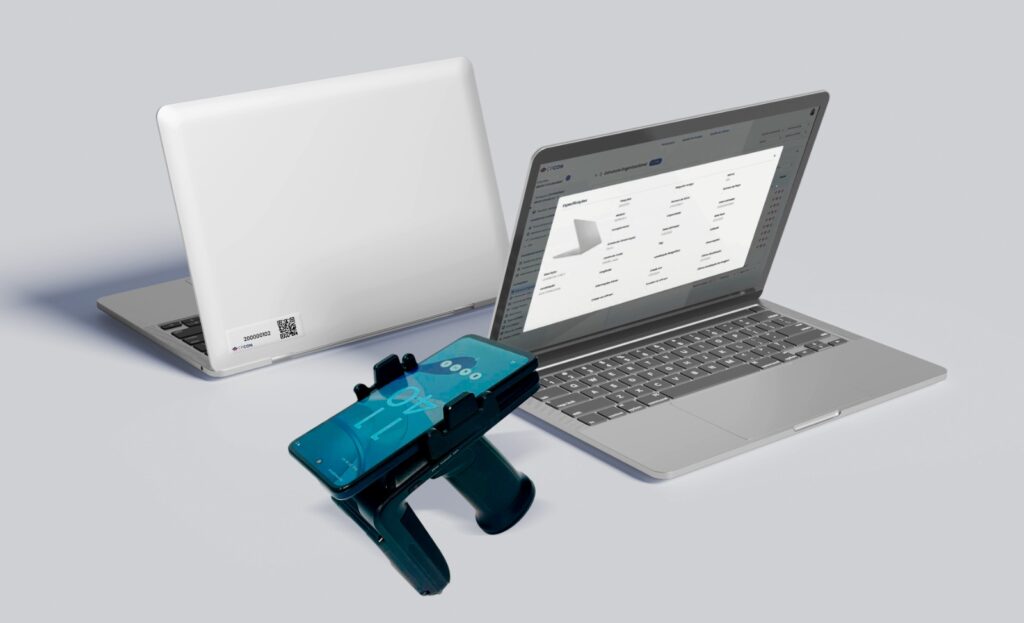When Petrobras needed to present its financial results to international markets following corruption scandals, strict adoption of IASB standards was essential to regain investor trust. The same applies to companies preparing for IPOs, seeking funding abroad, or simply maintaining credibility with shareholders. In these scenarios, it’s not enough to “do accounting.” You need to speak the same financial language the global market expects — and that language is IFRS.
The IASB (International Accounting Standards Board) is the body responsible for developing IFRS (International Financial Reporting Standards), which define how companies should recognize, measure, and disclose their assets, revenues, and obligations. Standards such as IFRS 16 (leases), IFRS 13 (fair value), and IAS 36 (impairment) directly impact the balance sheet, financial indicators, and even business strategy.
More than just understanding the standards, companies must apply them with technical precision. That’s where CPCON comes in: with proven expertise in asset valuation and strategic accounting management, CPCON provides the guidance needed to turn IFRS complexity into a real competitive edge.
In this guide, you’ll discover what the IASB is, how its standards work in practice, and how your company can benefit from adopting international accounting standards with expert support.

Table of Contents
ToggleWhat is the IASB and What Is Its Role in the Global Landscape?
The IASB (International Accounting Standards Board) is an independent organization based in London, responsible for developing and updating the IFRS — International Financial Reporting Standards. Its central role is to ensure that companies around the world present their financial information in a clear, reliable, and standardized manner.
The importance of the IASB goes far beyond issuing technical standards. It directly influences business decisions, from capital raising to mergers, acquisitions, and corporate restructuring. Banks, auditors, regulators, and international investors use the IFRS as a benchmark to assess an organization’s financial health and transparency.
Established in 2001 to replace the former IASC (International Accounting Standards Committee), the IASB emerged from the need to professionalize the standard-setting process and adapt it to the new dynamics of the global market — especially after accounting scandals like Enron and WorldCom in the early 2000s.
Since then, its standards have been adopted by over 140 countries — including Brazil, which began formally aligning with international standards after the enactment of Law No. 11.638/2007, later regulated by CPC (Comitê de Pronunciamentos Contábeis) pronouncements harmonized with IFRS.
The adoption of IFRS brought a true transformation to corporate accounting. Companies had to implement new measurement criteria, recognize contracts and assets more accurately in line with economic reality, and structure financial reports that could be clearly understood by investors anywhere in the world.
IASB Timeline: From Inception to the IFRS Framework
The history of the IASB is marked by significant structural changes in how companies around the world report their financial information. Understanding this evolution helps explain why IFRS standards have become essential for organizations seeking strong governance, audit readiness, and access to global capital markets.
From IASC to IFRS: The Path to Standardization
It all began in 1973 with the creation of the IASC (International Accounting Standards Committee), established by a coalition of accounting bodies from various countries. Its goal was to promote consistency in international accounting practices. Over nearly three decades, the IASC issued the IAS (International Accounting Standards), which aimed to standardize recognition, measurement, and disclosure criteria.
However, as global financial markets matured and business operations grew more complex, it became clear that a more technical, independent, and adaptable governance model was needed. That shift occurred in 2001 with the establishment of the IASB.
The IASB’s formation was accompanied by the creation of the IFRS Foundation, a nonprofit organization that oversees the board and ensures that its work remains in the public interest. The IASB began gradually revising and replacing the older IAS with a new set of standards — the IFRS (International Financial Reporting Standards) — written in clearer language, with a modular structure and a stronger emphasis on principles-based accounting.
Some original IAS standards remain in effect today, such as IAS 36 (Impairment of Assets) and IAS 38 (Intangible Assets), though they are regularly updated to reflect modern business realities.
Strategic Collaboration: IASB and FASB in the Convergence Project
A major milestone in the IASB’s journey was its convergence project with the FASB (Financial Accounting Standards Board), the U.S. standard-setter. While the United States has not formally adopted IFRS, this collaboration led to meaningful alignment between IFRS and U.S. GAAP (Generally Accepted Accounting Principles).
The convergence effort resulted in closely aligned standards like IFRS 15 (Revenue from Contracts with Customers) and IFRS 16 (Leases), making it easier for multinational companies to prepare consistent financial statements and gain investor trust across jurisdictions.
The IASB’s role goes far beyond issuing accounting rules. It also fosters technical dialogue, promotes global consistency, and continuously evolves international accounting practices to meet the demands of a changing economic landscape.
Key IFRS Standards and Their Impact on Businesses
IFRS standards are not just technical guidelines — they directly shape how a company presents its financial results, measures its assets, recognizes revenue, and negotiates with investors and financial institutions.
Some of these standards have triggered major changes in corporate financial statements, requiring updates to internal processes, systems, and even business strategies.
Let’s take a closer look at three of the most impactful IFRS standards and why it’s essential to apply them with precision.
IFRS 9 – Financial Instruments
This standard governs the classification, measurement, and impairment of financial assets. It replaced IAS 39 and introduced significant changes, especially for financial institutions and companies with high volumes of derivative transactions, investments, or trade receivables.
Key impacts:
- Adoption of the expected credit loss model, requiring more realistic projections of default risk.
- Reclassification of assets based on the business model and contractual cash flow characteristics.
- Greater transparency around credit risk exposure.
In practice: companies began provisioning losses more proactively, which can directly impact operating results.
IFRS 15 – Revenue from Contracts with Customers
IFRS 15 replaced multiple previous standards and interpretations, introducing a single, five-step model for revenue recognition. Its main goal is to ensure revenue is recognized when — and to the extent that — performance obligations are satisfied.
Key impacts:
- Standardization of revenue recognition criteria.
- In-depth review of long-term contracts (e.g., construction, software).
- Requirement to clearly define when value is delivered to the customer.
Real-world example: technology companies that sell licenses bundled with support and updates must now spread revenue over time, affecting top-line figures and EBITDA.
IFRS 16 – Leases
IFRS 16 redefined how leases are reported. Previously, operating leases often remained off the balance sheet. Under this new standard, lessees are required to recognize both a right-of-use asset and a lease liability for nearly all lease contracts.
Key impacts:
- Recognition of new assets and liabilities on the balance sheet.
- Increase in EBITDA, as rent expense is replaced by depreciation and interest.
- Changes in debt ratios and return-on-asset metrics.
In practice: companies with multiple lease agreements — such as those in retail or logistics — saw their financial statements undergo major restructuring.

IFRS 13 and Fair Value: How to Measure Assets Reliably
Few standards influence as many others as IFRS 13 – Fair Value Measurement. While it doesn’t require fair value use on its own, it defines exactly how fair value should be determined whenever another standard calls for it — which happens frequently in IFRS 9, IFRS 16, IAS 36, IAS 40, and several others.
What Is Fair Value?
In simple terms, fair value is the price that would be received to sell an asset or paid to transfer a liability in an orderly transaction between market participants at the measurement date.
Unlike historical cost, fair value reflects current market conditions and incorporates real-time data that can change with market volatility or economic cycles.
Fair Value Hierarchy: Levels 1, 2, and 3
To ensure transparency and consistency, IFRS 13 introduced a three-level hierarchy for fair value inputs:
- Level 1: Quoted prices in active markets for identical assets or liabilities (e.g., publicly traded stocks).
- Level 2: Inputs other than quoted prices that are observable, such as recent comparable transactions (e.g., real estate valuations based on similar properties).
- Level 3: Unobservable inputs, often based on internal models or assumptions (e.g., one-of-a-kind equipment or custom intangible assets).
Most businesses fall into Levels 2 and 3, where the use of professional judgment and market-based assumptions is critical — and where the margin for error is much greater without proper technical support.
Key impacts:
- Influences balance sheet values for assets like real estate, equipment, and financial instruments.
- Affects profit or loss through revaluations, gains, and impairments.
- Plays a major role in how investors perceive the true worth of a company.
For example, updating the fair value of a building or machinery based on a proper valuation can significantly impact a company’s equity and leverage ratios — which, in turn, affects investor confidence and lending decisions.
IAS 36: Impairment Testing That Helps You Avoid Surprises
Imagine going through an audit only to discover that part of your company’s assets are overvalued — and now you’re required to adjust their book value, impacting your income statement. Scenarios like this are more common than they seem, and IAS 36 – Impairment of Assets exists to prevent them.
This standard plays a critical role in IFRS by ensuring that assets are not carried at amounts higher than their recoverable value. Failure to comply can result in overstated financials, poor decision-making, and loss of investor confidence.
What is an impairment test?
IAS 36 requires companies to assess whether there are indicators that an asset — or group of assets — may be impaired. If such indicators exist, the entity must estimate the recoverable amount and compare it to the asset’s carrying amount.
The recoverable amount is the higher of:
- Value in use: the present value of expected future cash flows from continued use of the asset.
- Fair value less costs of disposal: the amount obtainable from selling the asset, minus selling costs.
If the carrying amount exceeds the recoverable amount, an impairment loss must be recognized, and the asset’s value adjusted accordingly.
Key impacts:
- Reduction in the book value of assets on the balance sheet.
- Recognition of expenses that directly affect net income.
- Requirement to revisit cash flow forecasts and key assumptions.
- Necessity of external valuations and financial modeling to support compliance.
This test is especially relevant for industries with large-scale operations, such as manufacturing, energy, or real estate, where asset values are often volatile and sensitive to market conditions.
Why professional support matters
Conducting a proper impairment test requires both financial and technical inputs:
- For fair value less costs to sell, companies often need real estate or equipment appraisals based on market data.
- For value in use, cash flow projections must be well-supported, consistent, and aligned with the company’s actual operations.

IFRS 15: The Challenge of Revenue Recognition
Recognizing revenue might sound straightforward at first glance — you sell, you book it. But for many companies, especially those with long-term contracts, bundled services, or subscription models, the answer is far more complex. That’s where IFRS 15 – Revenue from Contracts with Customers comes in.
This standard replaced multiple previous rules and interpretations by introducing a unified, principle-based model for revenue recognition. Its core purpose is to align revenue recognition with actual performance delivery.
The 5-Step Model of IFRS 15
IFRS 15 requires companies to apply the following five steps to determine when and how to recognize revenue:
- Identify the contract with the customer.
- Identify the performance obligations.
- Determine the transaction price.
- Allocate the transaction price to each obligation.
- Recognize revenue as each obligation is satisfied.
This model ensures revenue is recorded in proportion to the value delivered — not simply when cash is received or an invoice is issued.
Key impacts:
- Standardizes revenue recognition across industries and regions.
- Requires detailed analysis of long-term or multi-element contracts.
- Demands clarity on the timing and amount of value delivered to the customer.
Real-world example
Technology companies that sell licenses bundled with support and future updates can no longer recognize the full payment upfront. Instead, they must break it down and recognize revenue gradually, over time — which can significantly affect reported revenue and EBITDA.
Why it matters for your business
IFRS 15 doesn’t just affect your accounting team — it requires coordination between finance, sales, legal, and operations. Contracts may need to be restructured, systems updated, and performance tracking improved to comply with the standard.
IFRS 16: What Changes in Lease Accounting
When IFRS 16 came into effect, it significantly transformed how companies account for leases. Under previous standards, many operating leases weren’t recorded on the balance sheet. With IFRS 16, that changed — lessees are now required to recognize nearly all leases as both an asset and a liability.
This shift brought transparency to what was previously considered off-balance sheet financing, offering a more accurate view of a company’s financial obligations and use of assets.
What the standard requires
As of the adoption of IFRS 16, companies must record:
- A right-of-use asset — representing the value of the leased asset over the lease term.
- A lease liability — representing the present value of future lease payments.
The accounting treatment closely mirrors that of finance leases under previous rules, but now applies to nearly all lease types, with limited exceptions for low-value or short-term leases.
Key impacts:
- Increase in reported assets and liabilities on the balance sheet.
- Higher EBITDA, since rent expense is replaced by depreciation and interest.
- Changes in key financial ratios, such as leverage, return on assets (ROA), and interest coverage.
- Greater scrutiny from auditors and financial analysts on lease disclosures and assumptions.
IAS 38: Navigating the Complexity of Intangible Assets
Trademarks, software, patents, franchise rights, proprietary processes — these are all examples of intangible assets: items that have no physical form but can be highly valuable to a business. In industries like tech, healthcare, education, and retail, intangibles often represent a larger portion of enterprise value than tangible assets.
IAS 38 – Intangible Assets provides the framework for recognizing, measuring, and amortizing these types of assets. It’s one of the more challenging IFRS standards to apply, as it involves professional judgment, technical documentation, and a clear understanding of what qualifies as an intangible.
What qualifies as an intangible asset?
According to IAS 38, an intangible asset must be:
- Identifiable — either separable or arising from contractual/legal rights.
- Controlled by the entity — due to past events or transactions.
- Capable of generating future economic benefits — directly or indirectly.
- Measurable reliably — in terms of cost or fair value.
The standard draws a clear line between acquired and internally generated intangibles. Internally developed intangibles (such as internally built software, brands, or proprietary technology) are more complex.
Key impacts:
- Uncertainty in determining whether costs should be expensed or capitalized.
Risk of under- or overvaluing assets that have no physical presence. - Mandatory impairment testing for indefinite-lived intangibles.
- Increasing relevance of intangible assets in business valuation, especially during mergers and acquisitions.
Why technical valuation matters
When intangible assets are acquired through M&A, or when they are part of complex commercial operations, valuation becomes essential. This applies especially to intangible elements tied to real estate — such as location value, brand equity of a retail site, or customer relationships associated with a facility.
Materiality in the Context of IFRS
Not every detail needs to be included in financial statements. What truly matters is the information that can influence decisions made by stakeholders — and that’s the essence of materiality.
Materiality is one of the most foundational — and nuanced — principles within IFRS. It guides what should be disclosed, how it should be presented, and which omissions or misstatements are significant enough to warrant correction.
What is materiality?
Under IFRS, information is considered material if omitting, misstating, or obscuring it could reasonably be expected to influence the decisions of users relying on the financial statements.
Materiality is not based solely on size. It involves both quantitative and qualitative factors:
- Magnitude: the size or value of the item.
- Nature: whether the information is sensitive, strategic, or relevant to understanding performance.
- Context: how it fits within the broader financial picture of the business.
That means two assets with the same monetary value may be treated differently depending on their role in the company’s operations or industry.
Key impacts:
- Drives decisions on whether to include or exclude specific disclosures.
- Influences how much detail is provided in financial statement notes.
- Helps define audit scope and the significance of corrections.
- Ensures stakeholders focus on what truly matters.
Examples in practice
Imagine a $2 million asset. For a small or mid-sized company, that could be highly material. For a multinational with billions in assets, it may not be. However, if that asset is a critical component in production or represents a key strategic investment, its importance may go beyond its dollar value.
Similarly, a change in accounting policy — even with minimal financial impact — might be material if it signals a shift in the company’s financial strategy or risk exposure.
IFRS vs. US GAAP: Key Differences Companies Should Understand
While both IFRS and US GAAP aim to provide transparent, consistent, and useful financial information, they differ significantly in how they approach accounting principles, judgments, and disclosures. Understanding these differences is critical for U.S.-based companies operating globally or working with international stakeholders.
Principles-Based vs. Rules-Based Frameworks
One of the most fundamental distinctions is that IFRS is principles-based, while US GAAP is rules-based. This means:
- IFRS allows for more professional judgment, giving companies flexibility to reflect the economic substance of a transaction.
- US GAAP tends to be more prescriptive, providing detailed guidance and bright-line rules for specific scenarios.
While principles-based standards offer adaptability, they can also lead to differences in interpretation. U.S. companies transitioning to IFRS often need to revise internal controls and documentation to support judgments under IFRS.
Your Company Ready for the Global Accounting Landscape with CPCON
Properly applying IASB standards is more than a regulatory obligation — it’s a strategic advantage. In an environment where financial data drives investment decisions, audit outcomes, and corporate credibility, accurate and compliant reporting becomes a cornerstone of long-term success.
Throughout this guide, we’ve explored how IFRS standards like IFRS 13 (Fair Value), IFRS 15 (Revenue), IFRS 16 (Leases), IAS 36 (Impairment), and IAS 38 (Intangible Assets) shape the financial reality of businesses. We’ve also seen how materiality and the differences between IFRS and US GAAP influence everything from disclosures to decision-making.
The real challenge isn’t just understanding the standards — it’s applying them precisely, in line with your company’s operational and strategic goals. That’s where CPCON adds value: by delivering accurate asset valuations, strategic accounting insights, and audit-ready documentation, we help turn compliance into clarity and complexity into opportunity.
Aligning with international standards isn’t just about checking a box. It’s about showing the market — and your stakeholders — that your company operates with transparency, consistency, and confidence. CPCON is your partner in achieving that level of excellence.
FAQ
1. What is the IASB and what does it do?
The IASB (International Accounting Standards Board) is an independent organization that develops IFRS, the global standards used to prepare financial statements. Its mission is to promote transparency, accountability, and comparability in financial reporting worldwide.
2. How are IFRS and US GAAP different?
IFRS is a principles-based framework that allows for more professional judgment. US GAAP is more rules-based, with detailed guidance for specific scenarios. Key differences appear in areas such as revenue recognition, leases, impairment testing, and inventory valuation.
3. What is fair value according to IFRS 13?
Fair value is the price that would be received to sell an asset or paid to transfer a liability in an orderly transaction between market participants. IFRS 13 defines how to measure it and introduces a three-level hierarchy of inputs.
4. What is an impairment test under IAS 36?
Impairment testing checks whether an asset’s carrying value exceeds its recoverable amount. If it does, a loss must be recorded. This ensures assets aren’t overstated on the balance sheet.
5. How does IFRS 16 affect lease accounting?
IFRS 16 requires most leases to be recognized on the balance sheet as a right-of-use asset and a lease liability. This affects financial metrics like EBITDA, leverage, and return on assets, and increases transparency in reporting lease obligations.
This comprehensive guide by CPCON explores the role of the IASB (International Accounting Standards Board) and the practical application of IFRS (International Financial Reporting Standards) in global financial reporting. It covers key standards such as IFRS 13 (Fair Value), IFRS 15 (Revenue Recognition), IFRS 16 (Leases), IAS 36 (Impairment), IAS 38 (Intangible Assets), and the principle of materiality.
Get to Know CPCON Group: A global expert in asset management and inventory solutions
CPCON Group is a global leader in asset management, fixed asset control, and RFID technology. With over 29 years of experience, we have supported major companies such as Nestlé, Pfizer, Scania, BASF, Coca-Cola Andina, Vale, Vivo, Petrobras, and Caixa in high-complexity projects.
Curious about our global footprint? We are present in:
- North America: Toronto, New York, Miami, Minneapolis, Seattle, Dallas
- Latin America: São Paulo, Buenos Aires, Lima, Bogotá, Mexico City
- Europe: Lisbon, Porto, London, Birmingham, Milan, Rome, Turin, Madrid, Bilbao
- Middle East: Dubai, Saudi Arabi
- Caribbean: Tortola, Grand Cayman
Follow our LinkedIn Showcase Page and stay updated with strategic content on asset control, inventory management, and RFID innovation across industries.






















